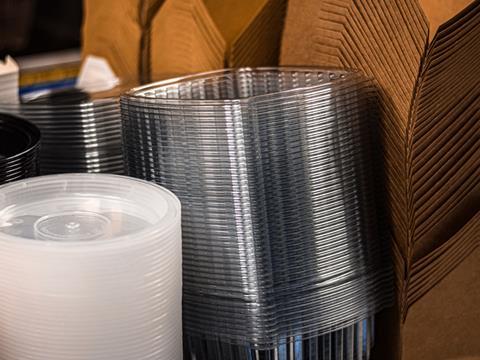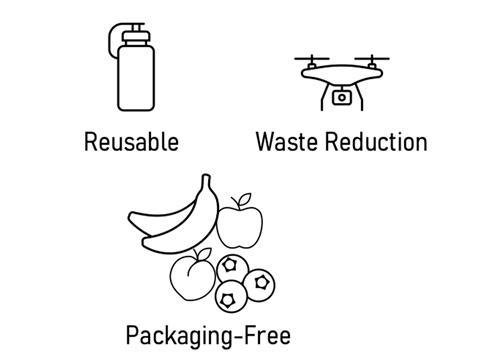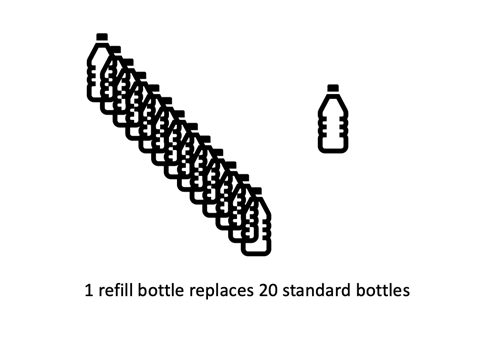
In a stark warning to the packaging industry, experts are predicting that the EU’s new Circular Economy Action Plan could lead to unprecedented disruption in the sector. Paul Foulkes-Arellano, founder of Circuthon Consulting, tells us more – and discusses how businesses can get ahead of the curve.
Published on 30th March 2022, when many of us in Europe had bigger issues on our minds, The Circular Economy Action Plan (CEAP) 2.0 is a cornerstone of the European Green Deal.
It is “designed to strengthen the economy, protect the environment and eliminate waste. It recognizes the importance of permanent materials, as well as the need to increase high-quality recycling and move away from landfilling waste. Above all else, The Green Deal aims to enhance circularity in all industrial value chains.
Whilst the specifics for the plastics and packaging sector are no doubt the main points of industry discussion and will affect brand and pack suppliers directly, the overarching philosophy and success metrics regarding manufacture overall are vitally important for us all to understand.
This is the broad theme of the whole CEAP:
The new action plan announces initiatives along the entire life cycle of products. It targets how products are designed, promotes circular economy processes, encourages sustainable consumption, and aims to ensure that waste is prevented and the resources used are kept in the EU economy for as long as possible. It introduces legislative and non-legislative measures targeting areas where action at the EU level brings real added value.
In a nutshell, the European Commission is taking direct aim at all single-use packaging and the linear system as operates across the continent right now. Much of the legislation is substrate-agnostic. However, what is very clear is that all kinds of taxes, incentives and other tactics will be employed to substantially reduce the production of throwaway one-time packaging. This means a complete change to the packaging industry as we have known it for the past half-century. It’s not about “better” packaging, “greener” substrates, lower carbon formats – it’s about rewriting all the rules and moving to a supply chain that is either:
A) Packaging-free
B) Returnable/re-usable
C) Reduces waste (in a major way)

What does this mean in practice?
The current packaging industry is about to experience disruption in an unimaginable way. If pack producers have felt that the ocean-waste campaigns and anti-plastic sentiment from shoppers have been tough, then the next stage of legislation will be even more painful. Business as usual is about to be replaced by circularity as usual.
Instead of 20 units of single-use packaging, a supplier may be forced to sell just one unit of reusable packaging. Potentially the unit price/margin could be higher … but imagine how much investment there is in equipment across Europe, and start doing the maths. It makes for some shocking calculations. Industry bodies are already making those calculations, yet many are reluctant to believe them. For many businesses this legislation will be cataclysmic; for others who are investing heavily in genuinely circular solutions, there is a big reward only years away.

I prefaced this analysis by focusing on the overarching themes of the Circular Economy Action Plan, but let’s start to analyse the clauses relating to packaging and plastics. We should begin by looking at clause 3.3 in the Key Product Value Chains section which refers specifically to packaging.
In order to ensure that all packaging on the EU market is reusable or recyclable in an economically viable way by 2030, the Commission will review Directive 94/62/EC 27 to reinforce the mandatory essential requirements for packaging to be allowed on the EU market and consider other measures, with a focus on:
- Reducing (over)packaging and packaging waste, including by setting targets and other waste prevention measures;
- Driving design for re-use and recyclability of packaging, including considering restrictions on the use of some packaging materials for certain applications, in particular where alternative reusable products or systems are possible or consumer goods can be handled safely without packaging;
- Considering reducing the complexity of packaging materials, including the number of materials and polymers used.
Legislation is incredibly long-winded, and often governments produce reports with fancy graphics and neat bullet-point summaries to aid comprehension – not the case here. This policy framework comes with some stark warnings for the packaging industry, and no reassuring charts. As a consultant working on implementing circularity every week of the year, I understand just how difficult it is to transition from linear to circular. Start-ups have a huge advantage as there is little capital investment, but they don’t have the scale and infrastructure that big brands need.
Let’s review those key terms in the above clause: Reduce – Reuse – Recyclability – Without Packaging – Reduce number of Polymers. Nothing new here seemingly, but until now it’s been a hierarchy of preferred solutions. Now it’s mandatory – not a choice, and it’s the government that decides on the metrics, not the producer.
Plastics and bioplastics
Clause 3.4 is packed full of even more detail around plastics and bioplastics. It warrants in-depth reading and I won’t attempt to summarise it all here. But here is the topline:
“The EU Strategy for Plastics in the Circular Economy has set in motion a comprehensive set of initiatives responding to a challenge of serious public concern. However, as consumption of plastics is expected to double in the coming 20 years, the Commission will take further targeted measures to address the sustainability challenges posed by this ubiquitous material and will continue to promote a concerted approach to tackle plastics pollution at global level.”
If we are to move to a Europe where packaging-free (think sparkling or flavoured water coming from every hotel tap and domestic tap), refill (think Lush and Body Shop) or waste-reducing (think nanomaterials and smart technologies) is the norm, then it’s a whole new world. It’s digital compared to analogue; it’s EV compared to diesel. But this time it’s our industry where many packaging formats are based on historical norms from previous centuries. It’s a huge leap into the future, a huge leap into the unknown.
I’m working with clients to understand the repercussions of the CEAP, and it’s clear that we need our own action plans which are as ambitious as those of the European Commission. I would suggest that every brand and every packaging business sets up a circularity team now, not in 2025. March 2022 heralded a new era, and we are all going to have to work very hard to stay ahead of the game.
In March 2020 Paul founded Circuthon Consulting to accelerate his work on sustainability and circular economy projects across the globe. His areas of expertise are raw materials, food & beverage, apparel, and footwear. His particular focus is NextGen fibre recycling, composting, biomaterials, and new material development. Much of his work consists of mentoring businesses in the supply chain and disposal chain on reuse and novel materials.




















No comments yet